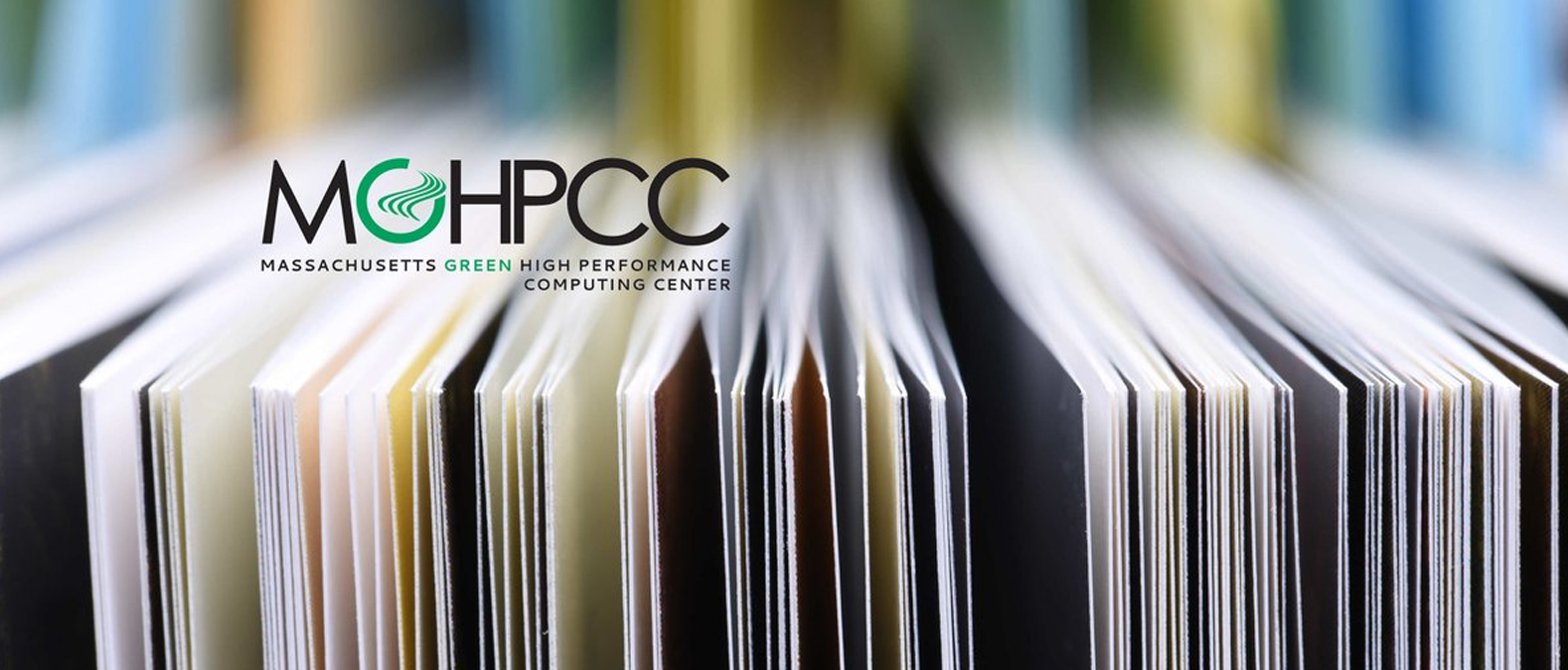
Strain-induced diode action? Urban tree canopy cover management? Magnetic domain states in tetrataenite? This month's selection of publications featuring research using the MGHPCC.
Gaurav Arya et al (2022), Automatic Differentiation of Programs with Discrete Randomness, arXiv: 2210.08572 [cs.LG]
Mark Baum and Minmin Fu (2022), Simple Stochastic Modeling of Snowball Probability Throughout Earth History, Geochemistry, Geophysics, Geosystems, doi: 10.1029/2022GC010611
BICEP/ Keck Collaboration (2022), BICEP / Keck XVI: Characterizing Dust Polarization Through Correlations with Neutral Hydrogen, arXiv: 2210.05684 [astro-ph.GA]
Bodhi Biswas et al (2022), Spectral broadening from turbulence in multiscale lower hybrid current drive simulations, arXiv:2210.02344
Allen Chang et al (2022), Removing Radio Frequency Interference from Auroral Kilometric Radiation with Stacked Autoencoders, arXiv: 2210.12931 [astro-ph.IM]
Zhuofa Chen et al (2022), Charge Separation in Monolayer WSe2 by Strain Engineering: Implications for Strain-Induced Diode Action, ACS Appl. Nano Mater., doi: 10.1021/acsanm.2c03264
Xiang Fu et al (2022), Forces Are Not Enough: Benchmark and Critical Evaluation for Machine Learning Force Fields with Molecular Simulations, arXiv: 2210.07237 [physics.comp-ph]
Asem Hassan and Paul C. Whitford (2022), Identifying Strategies to Experimentally Probe Multidimensional Dynamics in the Ribosome, J. Phys. Chem. B, doi: 10.1021/acs.jpcb.2c05706
Marc Werrett Healy (2022), Trees in the City: Spatiotemporal Dynamics, Benefits, and Management of Urban Tree Canopy Cover in Massachusetts Gateway Cities, Doctoral dissertation Clark University, Proquest: 29326753
Johnny Ho, David W. Schmitz (2022), A method for computing hadron–nucleus cross sections in fully active sampling calorimetric targets, arXiv: 2209.14712 [physics.ins-det]
Arman Guerra et al (2022), Self-Ordering of Buckling, Bending, Bumping Beams, arXiv:2210.11324 [cond-mat.soft]
Vindula Jayawardana et al (2022), The Impact of Task Underspecification in Evaluating Deep reinforcement Learning, arXiv: 2210.08607 [cs.LG]
Iksung Kang et al (2022), Simultaneous spectral recovery and CMOS micro-LED holography with an untrained deep neural network, Optica, doi: 10.1364/OPTICA.470712
Veenavee Nipunika Kothalawala et al (2022), First Principles Calculations of the Optical Response of LiNiO2, Condensed matter, doi: 10.3390/condmat7040054
Isaac C. Liao et al (2022), Learning to Optimize Quasi-Newton Methods, arXiv: 2210.06171 [cs.LG]
Elias N. Mansbach (2022), Size Ranges of Magnetic Domain States in Tetrataenite, Geochemistry, Geophysics, Geosystems, doi: 10.1029/2022GC010631
Mulligan, J.R. et al (2022), Quantifying the Relationship Between Microstructure and Performance in Gadolinium-Doped Ceria Infiltrated Ni/YSZ Symmetric Cells, The Journal of The Minerals, Metals & Materials Society, doi: 10.1007/s11837-022-05534-3
James Owens et al (2022), Can vehicle-to-grid facilitate the transition to low carbon energy systems? Energy Advances, doi: 10.1039/D2YA00204C
Jung Yeon Park and Lawson L.S. Wong (2022), Robust Imitation of a Few Demonstrations with a Backwards Model, arXiv: 2210.09337 [cs.LG]
Tirthak Patel et al (2022), What does Inter-Cluster Job Submission and Execution Behavior Reveal to Us? 2022 IEEE International Conference on Cluster Computing (CLUSTER), doi: 10.1109/CLUSTER51413.2022.00019
Adarsh S. Patri and T. Senthil (2022), Strong correlations in ABC-stacked trilayer graphene: Moir´e is important, arXiv: 2210.08025 [cond-mat.str-el]
Nikolaos Patsalidis et al (2022), Understanding the Interaction between Polybutadiene and Alumina via Density Functional Theory Calculations and Machine-Learned Atomistic Simulations, J. Phys. Chem. C, doi: 10.1021/acs.jpcc.2c03630
Albert Reuther et al (2022), AI and ML Accelerator Survey and Trends, arXiv: 2210.04055 [cs.AR]
F Sciortino et al (2022), Investigation of core impurity transport in DIII-D diverted negative triangularity plasmas, Plasma Phys. Control Fusion, doi: 10.1088/1361-6587/ac94f6
Tim Seyde et al (2022), Solving Continuous Control via Q-Learning, arXiv: 2210.12566 [cs.LG]
Vinith M. Suriyakumar, Ashia C. Wilson (2022), Algorithms that Approximate Data Removal: New Results and Limitations, arXiv: 2209.12269 [stat.ML]
Patrick van Zalm et al (2022), A Parallelization Strategy for the Time Efficient Analysis of Thousands of LC/MS Runs in High-Performance Computing Environment, J. Proteome Res., doi: 10.1021/acs.jproteome.2c00278
Yang Wang et al (2022), Precise Steric Features Control Aminoacyl-tRNA Accommodation on the Ribosome, J. Phys. Chem. B, doi: 10.1021/acs.jpcb.2c05513
Daniel C. Wilson et al (2022), Site-wide HPC Data Center Demand Response, HPEC22 conference
Do you have news about research using computing resources at the MGHPCC? If you have an interesting project that you want to tell people about or a paper you would like listed, contact